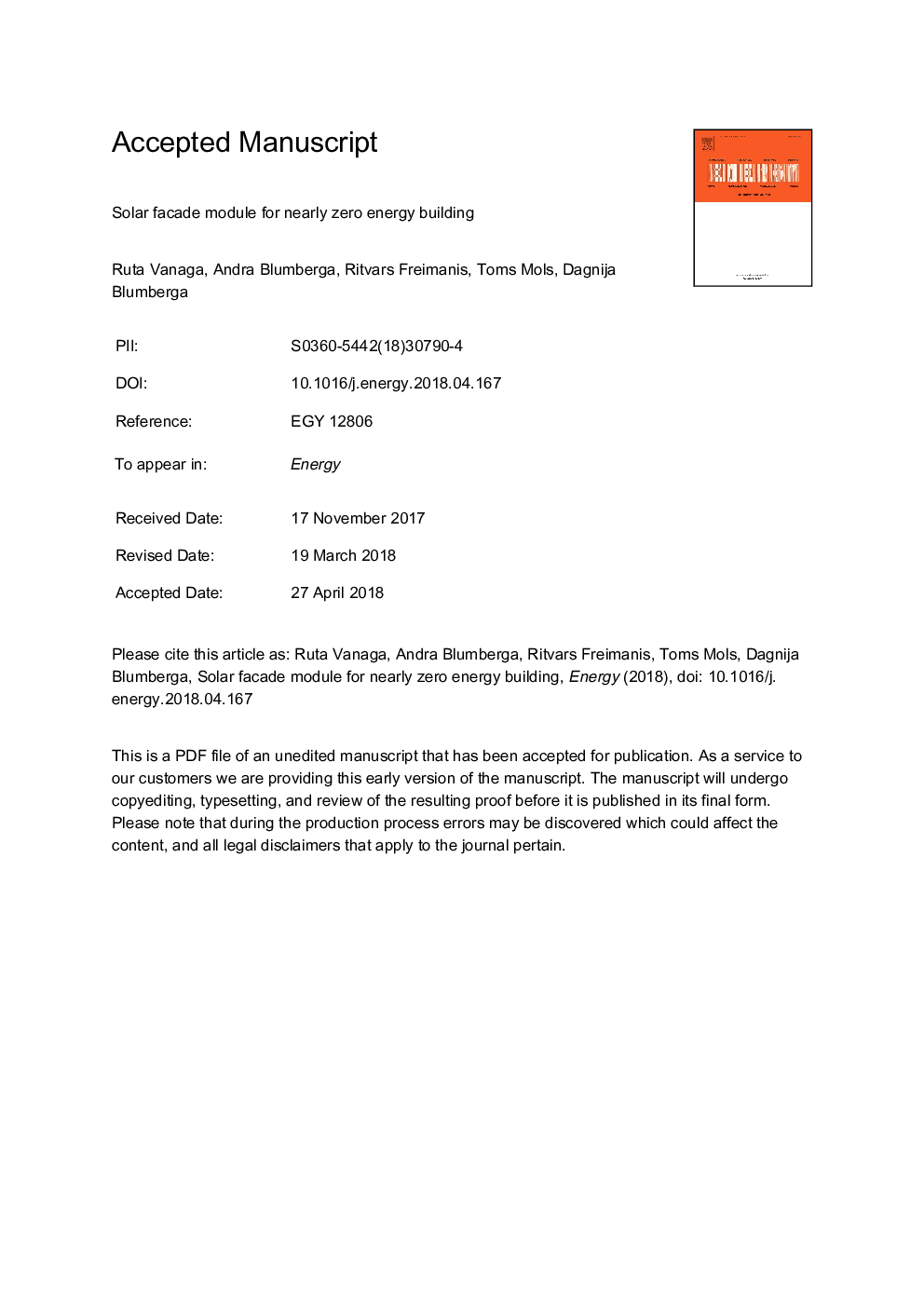| Article ID | Journal | Published Year | Pages | File Type |
|---|---|---|---|---|
| 8071320 | Energy | 2018 | 20 Pages |
Abstract
Buildings consume 40% of the total primary energy use worldwide and it could increase if no energy efficiency measures are taken. Diffusion of nearly zero energy buildings is among building energy efficiency measures in many countries. Synergy of energy reduction in buildings and efficiency increase in district heating and cooling networks is part of Smart Energy Systems. Utilisation of solar energy is part of nearly zero energy buildings concept. The main aim of this research is to carry out numerical and experimental study of storage capacity and the dynamic behaviour of a solar facade module that can accumulate solar energy to reduce heating and cooling loads in nearly zero energy building. In this study, the first part of the climate adaptive facade element - solar facade module is developed: the point focus imaging Fresnel lens is employed for concentrating solar beam on copper plate with fins which is used as heat transfer enhancer to phase change material. Results show that the dynamics of heat flows and accumulation processes in the facade module are very complex due to highly changing outdoor and indoor conditions. The indoor temperature difference in the range of 0.5â¯Â°C and 9â¯Â°C is observed between the opaque reference wall and the solar facade module depending on the time of the day and season.
Keywords
Related Topics
Physical Sciences and Engineering
Energy
Energy (General)
Authors
Ruta Vanaga, Andra Blumberga, Ritvars Freimanis, Toms Mols, Dagnija Blumberga,
